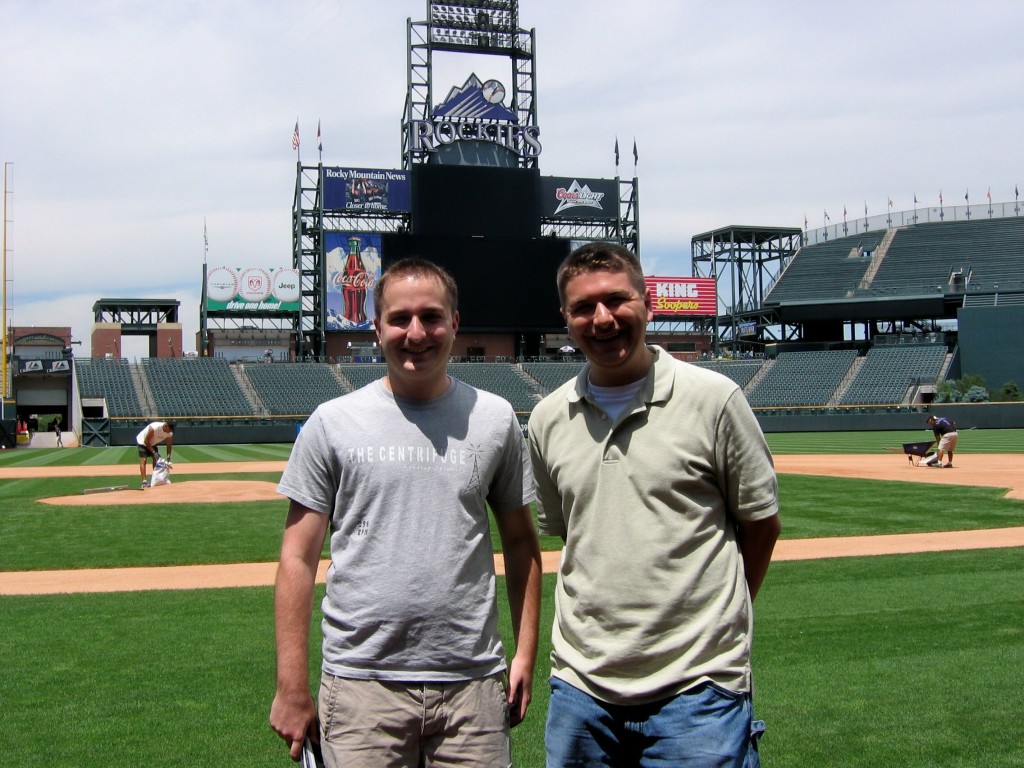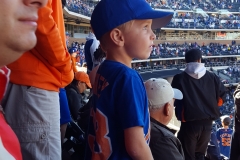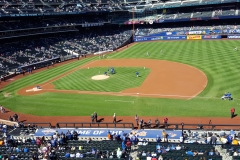
July 29, 2006: Denver, Colorado
Thermal undershirts, long johns, gloves, wool hats, snow boots, down jackets and baseball. Which of these does not fit? Sure, most would say baseball, but the fans in attendance at Coors Field on Opening Day 1995 would think it’s a trick question. Welcome to baseball in the Mile High City.
April 26, 1995. After spending their first two seasons at Mile High Stadium, the Colorado Rockies opened Coors Field to 40-degree temperatures and a full house. The Coors Field opener was originally scheduled for 1pm Mountain Time, but thanks for the folks at ESPN, who moved the game to 6pm, fans had to endure a 14-inning marathon that ended with Dante Bichette’s three-run home run. Rockies 11, Mets 9; temperature 26 degrees! Major League Baseball was brought to Denver for the 1993 season. The reception could not have been any better. The Rockies drew 4.5 million fans at Mile High Stadium in their first season and were on pace to exceed that the next, averaging 57,570 fans, before the strike prematurely ended the season. Rockies fans’ interest did not wane. The Rockies led the National League in attendance from 1993 to 1999. Coors Field was the jewel of the franchise and a cog in the revitalization of Lower Downtown Denver. Baseball would never be the same.
Denver’s altitude adds 9% to batted balls. For example, a ball hit 400 feet in LA’s Dodger Stadium would travel 436 feet in Coors Field. This forced ballpark architects to make Coors Field the largest ballpark in the Major Leagues; CF 415 feet from home, LF 347 feet, RF 350 feet. In theory these dimensions should have provided Rockies’ pitchers with hope, but those hopes have not come to fruition. Until their World Series run in 2007, the Rockies’ team ERA ranged from 5.28 to 6.35, by far the highest in Major League Baseball. Following the 2001 season, Rockies management decided to combat the thin air of Denver by storing 500 dozen baseballs in a humidor to keep balls from drying out and shrinking in the low humidity. This allows pitchers to grip the baseball more tightly, which cancels out the fact that the ball spins less when thrown at the higher altitude. Opponents have accused the Rockies of using baseballs from the humidor when they are pitching, and switching to non-humidor baseballs when the Rockies are at bat. These accusations are ridiculous, as the Rockies’ home run production has dropped dramatically (239 HR in 1997 compared to 150 in 2005) since the humidor has been built. This new style of baseball is a far cry from the frequent 12-10 slugfest during the Blake Street Bomber era of Rockies baseball.
For the first time on the Ballpark Tour, Mike and I took…a ballpark tour. We were provided unprecedented access, walking onto Coors Field and spending time in the Rockies dugout. Incredible! I have never seen greener grass. It was the perfect complement to our day of baseball, which unfortunately ended when the Padres defeated the Rockies 4-2. Nothing like a well-pitched game from Jeff Francis (7 innings, 2 earned runs) and Chris Young (5 innings, 1 earned run), to reinforce the new style of Rockies baseball, although we did see solo home runs from Eric Young and Khalil Greene of the Padres. Coors Field’s signature feature is its mile-high purple row of seats across Row 20 of the Upper Deck. These seats offer a majestic view of the Rocky Mountains, one of America’s great treasures.
Mike and I spent our non-baseball day in Colorado driving up Pike’s Peak, America’s most popular mountain range. With an elevation of over 14,000 feet, Pike’s Peak offers a unique view of the world below. Prior to our visit, Mike’s uncle warned us to bring a jacket, but with 95-degree weather in the forecast, why would we? Well, we found out. When we reached the summit, the temperature had dropped to 60 degrees. The hour-long drive gave me a new perspective on the environment. It’s beautiful to see that there are still parts of the United States we have not damaged with drilling, pollution or construction. It has inspired me to become more responsible with the resources I use during each day. Hopefully Mike and I can visit Pike’s Peak in 40 years and our pictures will remain the same.





